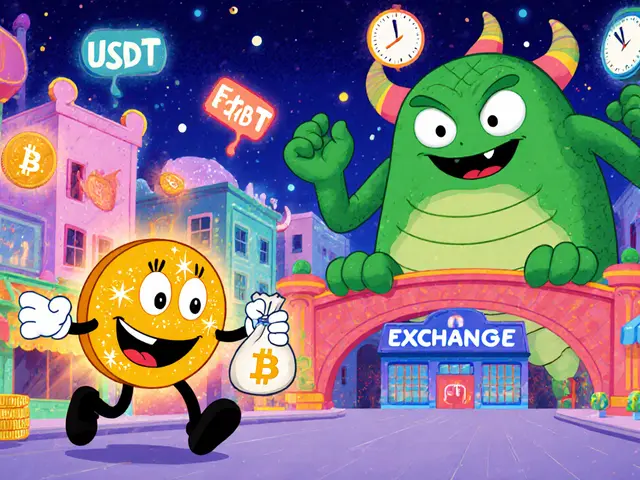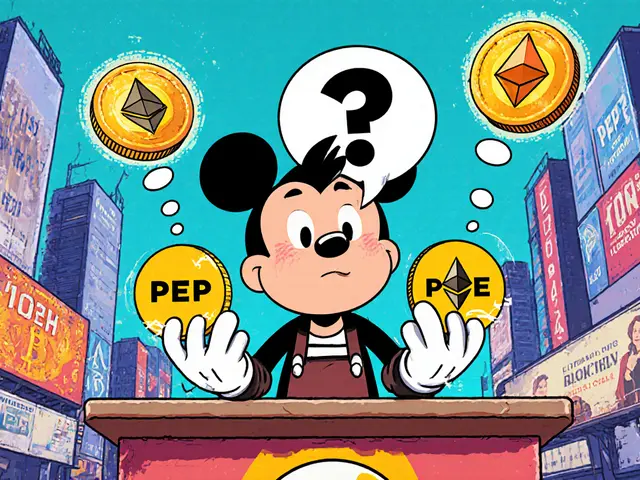Choosing a crypto exchange in 2025 isn’t about picking the first name you see. It’s about matching your goals-whether you’re buying your first Bitcoin or running complex trades-with a platform that actually fits your needs. The market has changed. Fees are lower, security is tighter, and tools are more powerful than ever. But not all exchanges are built the same. Some are made for beginners. Others are built for pros. And a few are designed for people who just want to sleep well at night knowing their assets are safe.
Best for Beginners: Coinbase
If you’ve never bought crypto before, Coinbase is still the easiest place to start. It’s clean, simple, and doesn’t overwhelm you with charts you don’t understand. You don’t need a finance degree to use it. Just sign up, verify your ID, link your bank, and buy. No confusing menus. No hidden fees. The app walks you through each step.
New users get $20 in Bitcoin when they trade at least $100 within 30 days. There’s no minimum balance, and fees range from 0% to 4%, depending on how you pay. If you use a bank transfer, you’ll pay less. If you use a credit card, expect higher fees-but it’s instant. That’s useful if you’re trying to catch a price dip.
Coinbase also has a free learning center with short videos and quizzes. Watch a 5-minute lesson, answer a few questions, and earn free crypto. It’s not just marketing-it actually helps you learn. Over 100 million users have signed up since 2012, and most of them started exactly where you are now: unsure, curious, and looking for a safe entry point.
Best for Advanced Traders: Binance
If you’re trading more than once a week, Binance is where the action is. It’s not just a crypto exchange-it’s a trading floor. You get over 200 trading pairs, low fees starting at 0.1%, and tools like limit orders, stop-losses, and margin trading. Binance US, the American version, has fewer coins than the global site due to regulations, but it still offers hard-to-find altcoins like Solana, Polygon, and Arbitrum that you won’t find on Coinbase.
Professional traders love Binance because of its depth. Liquidity is high, so big orders don’t move the price much. The platform also supports API trading, so you can connect automated bots. It’s not beginner-friendly-there’s no hand-holding. But if you know what you’re doing, it’s the cheapest and most powerful option on the market.
One thing to watch: Binance has faced regulatory scrutiny in the U.S. Since 2023, it’s operated under stricter rules. That means fewer features, but also more legal protection for U.S. users. If you’re outside the U.S., the global version gives you even more options, including futures and options trading.
Best for Security: Kraken and Gemini
Security isn’t a feature-it’s a requirement. And Kraken and Gemini are two of the most secure exchanges you can use. Both are fully compliant with U.S. financial laws. They hold licenses from FinCEN and state regulators. Your funds are stored in cold storage. Insurance covers losses from hacks. They even publish proof-of-reserves monthly so you can verify they actually have your coins.
Kraken stands out for advanced traders who care about safety. It offers 24/7 customer support, institutional-grade custody, and API access for algorithmic trading. Maker fees are just 0.16%, taker fees are 0.26%. It supports over 200 cryptocurrencies and has high-yield staking for Ethereum, Cardano, and Polkadot. If you’re holding for the long term, Kraken’s staking rewards can add 3% to 8% annual returns.
Gemini, founded by the Winklevoss twins, is known for being ultra-conservative. It’s one of the few exchanges that’s regulated as a trust company. That means it follows banking rules, not just crypto rules. Fees range from 0.03% to 3.49%, depending on your payment method. New users get $20 in Bitcoin when they trade $100 or more. It’s not the cheapest, but if you’re worried about losing your crypto to a hack or scam, Gemini gives you peace of mind.

Best for Social Trading: eToro
eToro isn’t just a crypto exchange-it’s a social network for investors. Launched in 2007, it started as a platform for copying stock traders. Now, it lets you copy crypto traders too. The CopyTrader feature shows you who’s making the most money, what they’re buying, and lets you mirror their trades automatically. You don’t need to analyze charts or time the market. Just pick a top performer, hit copy, and let them trade for you.
In May 2025, eToro went public on Nasdaq with a $5.6 billion valuation. That’s a big deal. It means they’re now subject to strict financial oversight. They’re licensed by the FCA, ASIC, CySEC, and FinCEN. They use segregated accounts, SSL encryption, and mandatory two-factor authentication. Over 38 million people use the platform, with $16.6 billion in assets under management.
eToro offers over 130 cryptocurrencies, including newer ones like Solana and Chainlink. They’ve added options trading in the UK and futures in Europe. They also have a free demo account with $100,000 in virtual money. You can test strategies without risking real cash. For people who want to learn by watching others, eToro is unmatched.
Best for Multi-Asset Trading: Uphold
What if you want to trade crypto, stocks, gold, and euros all in one place? Uphold lets you do that. It’s not just a crypto exchange-it’s a digital wallet that supports 250+ assets. You can convert Bitcoin to gold to euros in seconds. No need to jump between platforms. It’s ideal for people who want flexibility.
Fees range from 0.2% to 2.95%, depending on the asset and payment method. There’s no minimum account balance, just a $1 minimum deposit. Unlike other exchanges, Uphold doesn’t offer sign-up bonuses. But it doesn’t need to. Its strength is simplicity and integration. You can link your bank account, debit card, or even PayPal. It’s perfect for travelers, expats, or anyone who wants to move money across borders without traditional banks.
Uphold holds a money transmitter license in the U.S. and is regulated in the EU. It’s not as flashy as Binance or as social as eToro, but it’s reliable, fast, and transparent. If you’re tired of juggling multiple apps, this is the one-stop solution.

What About Robinhood and Interactive Brokers?
Robinhood and Interactive Brokers aren’t crypto-first platforms. They’re traditional brokers that added crypto as an afterthought. But they’re still popular-especially among stock traders.
Robinhood offers commission-free crypto trading. No fees. No minimums. If you’re already using Robinhood for stocks, adding crypto is seamless. But you can’t withdraw your crypto to an external wallet. You can only buy, sell, or hold. That’s a big limitation if you want to use your coins on DeFi platforms or cold wallets.
Interactive Brokers charges up to 1% per trade, which is higher than most crypto exchanges. But if you’re already a client, you get access to advanced order types and research tools. It’s a good option for serious investors who want crypto alongside stocks, bonds, and ETFs. But if you’re focused only on crypto, it’s overpriced and limited.
How to Choose the Right One for You
Here’s a quick guide:
- First-time buyer? Go with Coinbase. Easy, safe, educational.
- Active trader? Use Binance. Low fees, deep markets, advanced tools.
- Security first? Pick Kraken or Gemini. Regulated, insured, transparent.
- Want to copy others? Try eToro. Learn by watching top traders.
- Trade crypto, stocks, gold? Use Uphold. One wallet, all assets.
- Already use Robinhood? Stick with it for simplicity-but know you can’t withdraw.
Don’t just pick the one with the biggest ad. Look at what you need: ease of use, cost, security, or features. Your choice should match your behavior-not your FOMO.
What’s Changing in 2025?
The crypto exchange world is evolving fast. Staking is now standard-most platforms let you earn interest just by holding coins. DeFi integration is growing. Some exchanges now let you lend your crypto directly from the app. NFT marketplaces are being built into platforms like Binance and Coinbase.
Mobile apps are better than ever. You can trade, check prices, and get alerts with one tap. Many exchanges now offer debit cards that spend your crypto directly. You can buy coffee with Bitcoin in London, New York, or Berlin.
Regulation is the biggest driver. Exchanges that didn’t get licensed are disappearing. Those that did-like Coinbase, Kraken, and eToro-are growing. The days of shady, unregulated exchanges are ending. If you’re using a platform that doesn’t mention its licenses, walk away.
What’s the safest crypto exchange in 2025?
Kraken and Gemini are the safest. Both are fully regulated in the U.S., hold licenses from major financial authorities, and publish monthly proof-of-reserves. They use cold storage for 95%+ of assets and carry insurance against hacks. If security is your top priority, these two are the best choices.
Which crypto exchange has the lowest fees?
Binance has the lowest fees, starting at 0.1% for spot trading. Kraken follows closely with 0.16% maker and 0.26% taker fees. For beginners, Coinbase charges 0% to 4%, depending on payment method. If you’re trading large amounts, Binance’s fee structure saves you the most money.
Can I trust eToro with my crypto?
Yes. eToro is publicly traded on Nasdaq, regulated by the FCA, ASIC, and FinCEN, and uses segregated custodial accounts. It’s one of the most transparent platforms in the industry. While it’s not designed for advanced trading, it’s safe for holding and copying trades. Your assets are protected under UK and EU financial laws.
Why can’t I withdraw crypto from Robinhood?
Robinhood restricts withdrawals to maintain control over user activity and simplify compliance. You can only buy and sell crypto on the platform. If you want to use your coins on DeFi apps or store them in a hardware wallet, Robinhood isn’t the right choice. It’s designed for passive investors, not active crypto users.
Is it better to use one exchange or multiple?
Use multiple if you need different features. For example, buy on Coinbase for simplicity, trade on Binance for low fees, and stake on Kraken for rewards. But don’t spread your holdings too thin. Keep the majority on one secure exchange, and use others only for specific tasks. Always withdraw long-term holdings to a personal wallet.
What should I avoid when choosing a crypto exchange?
Avoid exchanges that don’t list their regulatory licenses, have poor customer support, or don’t offer two-factor authentication. Steer clear of platforms with fake volume reports or no proof-of-reserves. If an exchange promises guaranteed returns or is based in an unregulated country, it’s likely a scam. Stick to platforms with clear legal standing and real user reviews.






neil stevenson
Coinbase is still the go-to for newbies, no cap. I got my first $20 BTC there and didn’t cry once. Simple as that. 🤙
Samantha bambi
I appreciate how detailed this breakdown is. The emphasis on regulation and proof-of-reserves is exactly what the space needs more of. Well done.
Anthony Demarco
Binance is the only real exchange period. All the others are just crypto-themed banking apps. If you’re not trading with leverage or API bots you’re wasting your time
Jack Richter
Meh. I just use Robinhood. It’s easy. Why complicate it?
sky 168
Kraken for staking. Gemini for peace of mind. That’s my two-pick strategy. No drama.